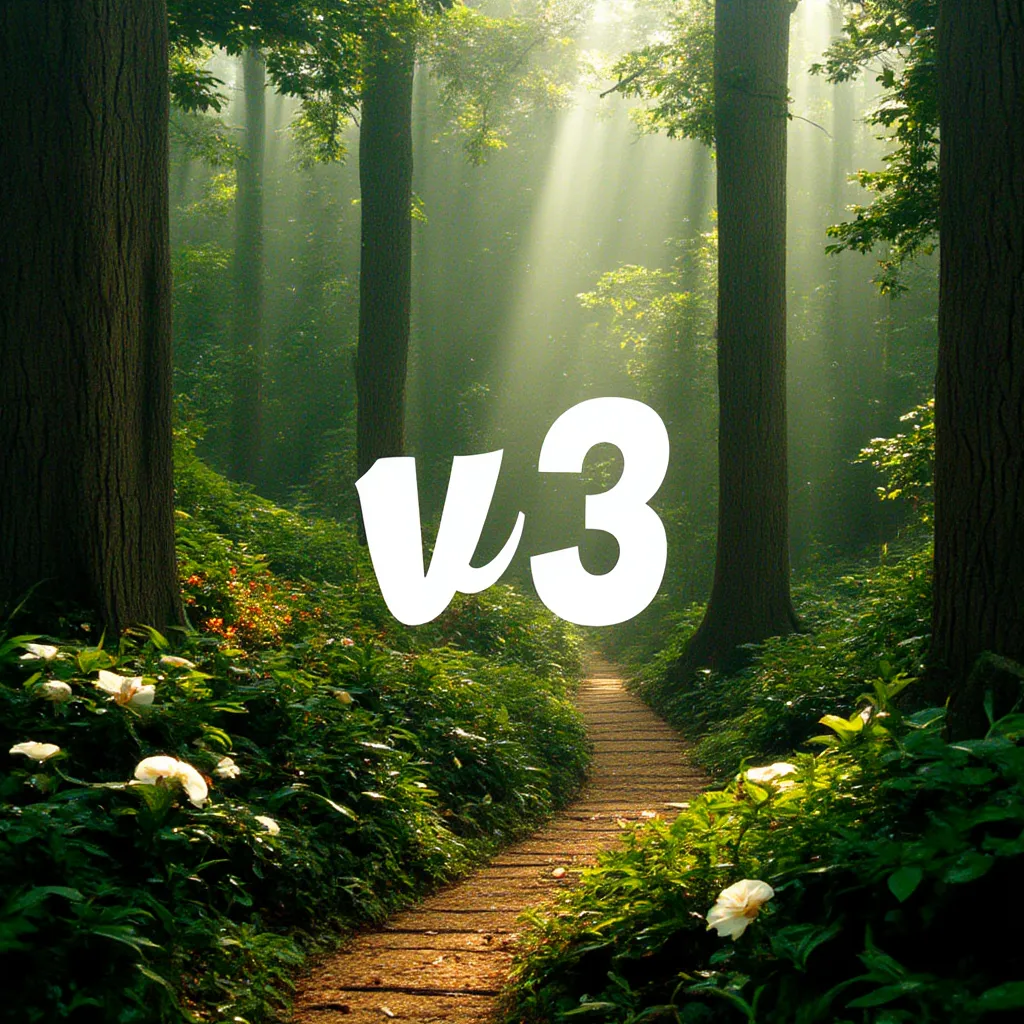flux-mjv3
Maintainer: fofr

3

| Property | Value |
|---|---|
| Run this model | Run on Replicate |
| API spec | View on Replicate |
| Github link | No Github link provided |
| Paper link | View on Arxiv |
Create account to get full access
Model overview
The flux-mjv3 model is a Flux LoRA (Latent Overriding Representation Adjustment) model trained on Midjourney v3 outputs from 2022. It can be triggered by using the prompt "a dream, in the style of MJV3" and adjusting the LoRA strength above 1. This model is maintained by fofr and is similar to other Flux LoRA models like [object Object], [object Object], [object Object], [object Object], and [object Object].
Model inputs and outputs
The flux-mjv3 model accepts a variety of inputs, including a prompt, an optional input image, and various parameters to control the output. The outputs are one or more generated images in the specified format, such as WEBP.
Inputs
- Prompt: The text prompt that describes the desired image to be generated.
- Image: An optional input image that can be used for image-to-image or inpainting tasks.
- Seed: A random seed value for reproducible generation.
- Model: The specific model to use for inference, with options like "dev" and "schnell".
- Width and Height: The desired dimensions of the generated image.
- Aspect Ratio: The aspect ratio of the generated image, with options like "1:1" and "custom".
- Num Outputs: The number of images to generate.
- Guidance Scale: The guidance scale for the diffusion process, which affects the realism of the output.
- Prompt Strength: The strength of the prompt for image-to-image or inpainting tasks.
- Extra LoRA: Additional LoRA models to combine with the main model.
- LoRA Scale: The scale of the main LoRA application.
- Extra LoRA Scale: The scale of the additional LoRA application.
Outputs
- Generated Images: One or more images generated based on the input prompt and parameters.
Capabilities
The flux-mjv3 model can generate a wide variety of dreamlike, surreal, and abstract images in the style of Midjourney v3. It can be used for tasks like image generation, image-to-image translation, and inpainting. The model's capabilities can be further enhanced by combining it with additional LoRA models.
What can I use it for?
The flux-mjv3 model can be used for a variety of creative and artistic applications, such as generating unique and visually striking images for use in digital art, illustrations, concept art, and even as inspiration for other creative projects. The model's ability to generate images in the style of Midjourney v3 can make it particularly useful for projects that require a similar aesthetic. Additionally, the model's flexibility in terms of input parameters and the ability to combine it with other LoRA models can allow for a wide range of personalization and experimentation.
Things to try
One interesting aspect of the flux-mjv3 model is the ability to adjust the LoRA strength above 1, which can result in more exaggerated or surreal-looking images. Experimenting with different LoRA strengths can lead to unique and unexpected results. Additionally, trying out different combinations of the input parameters, such as the prompt, seed, and aspect ratio, can produce a wide variety of outputs, allowing for a high degree of creative exploration.
This summary was produced with help from an AI and may contain inaccuracies - check out the links to read the original source documents!
Related Models

flux-mona-lisa

1
The flux-mona-lisa is a Flux LoRA model developed by fofr that can be used to generate images inspired by the Mona Lisa painting. It is part of a series of Flux LoRA models that can be combined with other LoRAs to create unique and creative images. Similar models include flux-koda, flux-mjv3, flux-tarot-v1, flux-neo-1x, and flux-childbook-illustration. Model inputs and outputs The flux-mona-lisa model takes in a variety of inputs, including an image, a mask, a prompt, and various parameters to control the output. The model can generate one or more images based on these inputs. Inputs Prompt**: The text prompt that describes the desired image. Image**: An input image that can be used for inpainting or image-to-image tasks. Mask**: A mask that specifies the areas of the input image to be inpainted. Seed**: A random seed value for reproducible generation. Model**: The specific model to use for inference, with options for a "dev" or "schnell" (fast) version. Width/Height**: The desired width and height of the generated image. Num Outputs**: The number of images to generate. Aspect Ratio**: The aspect ratio of the generated image. Guidance Scale**: The guidance scale for the diffusion process. Prompt Strength**: The strength for inpainting. Num Inference Steps**: The number of inference steps to perform. Extra LoRA**: An additional LoRA to combine with the main LoRA. LoRA Scale**: The scale factor for the main LoRA. Extra LoRA Scale**: The scale factor for the additional LoRA. Output Format**: The format of the output images. Output Quality**: The quality of the output images. Replicate Weights**: The Replicate LoRA weights to use. Disable Safety Checker**: An option to disable the safety checker for the generated images. Outputs Output Images**: One or more images generated by the model based on the provided inputs. Capabilities The flux-mona-lisa model can generate images inspired by the Mona Lisa painting, with a unique and creative style. By combining it with other LoRA models, you can create a wide variety of images that blend different artistic styles and concepts. What can I use it for? You can use the flux-mona-lisa model to create unique and visually interesting images for a variety of applications, such as art, design, and illustration projects. The model's ability to generate images inspired by the Mona Lisa could be particularly useful for creating alternative versions of this iconic painting or for incorporating it into surreal or abstract compositions. Things to try When using the flux-mona-lisa model, try experimenting with different prompts and combinations of inputs to see how the generated images vary. You can also experiment with the model's various parameters, such as the guidance scale and number of inference steps, to fine-tune the output. Additionally, consider combining the flux-mona-lisa model with other LoRA models to create even more unique and creative images.
Updated Invalid Date

flux-dev-lora

1.2K
The flux-dev-lora model is a FLUX.1-Dev LoRA explorer created by replicate/lucataco. This model is an implementation of the black-forest-labs/FLUX.1-schnell model as a Cog model. The flux-dev-lora model shares similarities with other LoRA-based models like ssd-lora-inference, fad_v0_lora, open-dalle-1.1-lora, and lora, all of which focus on leveraging LoRA technology for improved inference performance. Model inputs and outputs The flux-dev-lora model takes in several inputs, including a prompt, seed, LoRA weights, LoRA scale, number of outputs, aspect ratio, output format, guidance scale, output quality, number of inference steps, and an option to disable the safety checker. These inputs allow for customized image generation based on the user's preferences. Inputs Prompt**: The text prompt that describes the desired image to be generated. Seed**: The random seed to use for reproducible generation. Hf Lora**: The Hugging Face path or URL to the LoRA weights. Lora Scale**: The scale to apply to the LoRA weights. Num Outputs**: The number of images to generate. Aspect Ratio**: The aspect ratio for the generated image. Output Format**: The format of the output images. Guidance Scale**: The guidance scale for the diffusion process. Output Quality**: The quality of the output images, from 0 to 100. Num Inference Steps**: The number of inference steps to perform. Disable Safety Checker**: An option to disable the safety checker for the generated images. Outputs A set of generated images in the specified format (e.g., WebP). Capabilities The flux-dev-lora model is capable of generating images from text prompts using a FLUX.1-based architecture and LoRA technology. This allows for efficient and customizable image generation, with the ability to control various parameters like the number of outputs, aspect ratio, and quality. What can I use it for? The flux-dev-lora model can be useful for a variety of applications, such as generating concept art, product visualizations, or even personalized content for marketing or social media. The ability to fine-tune the model with LoRA weights can also enable specialized use cases, like improving the model's performance on specific domains or styles. Things to try Some interesting things to try with the flux-dev-lora model include experimenting with different LoRA weights to see how they affect the generated images, testing the model's performance on a variety of prompts, and exploring the use of the safety checker toggle to generate potentially more creative or unusual content.
Updated Invalid Date

flux-dev-realism

206
The flux-dev-realism model is a collaboration between FLUX.1-dev and XLabs-AI's realism LoRA. It combines the capabilities of the FLUX.1-dev model, which is a 12 billion parameter rectified flow transformer capable of generating images from text descriptions, with the realism improvements of XLabs-AI's LoRA. This can result in more photorealistic and detailed image generation compared to the base FLUX.1-dev model. Similar models include photorealistic-fx-lora and realvisxl-v3-multi-controlnet-lora, which also focus on photorealistic image generation. Model inputs and outputs The flux-dev-realism model takes in a text prompt, guidance, number of outputs, aspect ratio, LoRA strength, output format, output quality, and number of inference steps. It then generates one or more output images in the specified format and quality. The model can be tuned for different levels of realism and visual fidelity through the LoRA strength and number of inference steps parameters. Inputs Prompt**: The text description for the image to be generated Guidance**: The strength of the guidance for the generated image Num Outputs**: The number of output images to generate Aspect Ratio**: The aspect ratio of the generated images LoRA Strength**: The strength of the realism LoRA, from 0 (disabled) to 2 Output Format**: The format of the output images (e.g., WEBP) Output Quality**: The quality of the output images, from 0 to 100 Num Inference Steps**: The number of denoising steps, with a recommended range of 28-50 Outputs Output Images**: One or more generated images in the specified format and quality Capabilities The flux-dev-realism model can generate highly detailed and photorealistic images from text prompts. The addition of the realism LoRA allows for improvements in areas like texture, lighting, and overall visual fidelity compared to the base FLUX.1-dev model. This makes the flux-dev-realism model well-suited for applications requiring realistic image generation, such as product visualization, architectural rendering, or visual effects. What can I use it for? The flux-dev-realism model can be used for a variety of applications that require photorealistic image generation from text descriptions. Replicate, the maintainer of the model, suggests it could be used for product visualization, architectural rendering, or visual effects work. The model's ability to generate highly detailed and realistic images makes it a powerful tool for industries like e-commerce, real estate, and film/television production. Things to try With the flux-dev-realism model, you can experiment with different levels of realism by adjusting the LoRA strength parameter. Increasing the LoRA strength can result in more detailed and photorealistic images, while decreasing it can produce images with a more stylized or surreal look. Additionally, playing with the number of inference steps can impact the overall quality and sharpness of the generated images.
Updated Invalid Date

flux-koda

1
flux-koda is a Lora-based model created by Replicate user aramintak. It is part of the "Flux" series of models, which includes similar models like flux-cinestill, flux-dev-multi-lora, and flux-softserve-anime. These models are designed to produce images with a distinctive visual style by applying Lora techniques. Model inputs and outputs The flux-koda model accepts a variety of inputs, including the prompt, seed, aspect ratio, and guidance scale. The output is an array of image URLs, with the number of outputs determined by the "Num Outputs" parameter. Inputs Prompt**: The text prompt that describes the desired image. Seed**: The random seed value used for reproducible image generation. Width/Height**: The size of the generated image, in pixels. Aspect Ratio**: The aspect ratio of the generated image, which can be set to a predefined value or to "custom" for arbitrary dimensions. Num Outputs**: The number of images to generate, up to a maximum of 4. Guidance Scale**: A parameter that controls the influence of the prompt on the generated image. Num Inference Steps**: The number of steps used in the diffusion process to generate the image. Extra Lora**: An additional Lora model to be combined with the primary model. Lora Scale**: The strength of the primary Lora model. Extra Lora Scale**: The strength of the additional Lora model. Outputs Image URLs**: An array of URLs pointing to the generated images. Capabilities The flux-koda model is capable of generating images with a unique visual style by combining the core Stable Diffusion model with Lora techniques. The resulting images often have a painterly, cinematic quality that is distinct from the output of more generic Stable Diffusion models. What can I use it for? The flux-koda model could be used for a variety of creative projects, such as generating concept art, illustrations, or background images for films, games, or other media. Its distinctive style could also be leveraged for branding, marketing, or advertising purposes. Additionally, the model's ability to generate multiple images at once could make it useful for rapid prototyping or experimentation. Things to try One interesting aspect of the flux-koda model is the ability to combine it with additional Lora models, as demonstrated by the flux-dev-multi-lora and flux-softserve-anime models. By experimenting with different Lora combinations, users may be able to create even more unique and compelling visual styles.
Updated Invalid Date